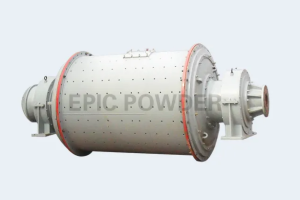In the realm of material processing and mineral extraction, the term "ball mill" frequently emerges. But what exactly is a ball mill, and what are its primary applications? This article delves into the mechanics and primary purposes of this essential piece of equipment.
The Basics of a Ball Mill
A ball mill is a type of grinding device used to turn raw materials into fine powder. Typically cylindrical in shape, it operates on the principle of impact and attrition. Inside the cylinder, there are grinding media, typically steel or ceramic balls, which are set into motion by a rotating mechanism. As the cylinder rotates, the balls tumble and cascade, colliding with the material and breaking it down. This action results in a finer product as the raw material is repeatedly pulverized between the balls.
Applications in Various Industries
- Mining and Metallurgy: One of the most prevalent uses of a ball mill is in the mining industry. Here, they grind ores into finer particles, preparing them for further processing or direct use.
- Pharmaceuticals: The pharmaceutical industry also relies on ball mills for the grinding of active ingredients and excipients, ensuring even distribution within a drug product.

- Paint and Pigments: To achieve smooth and homogenous products, paint and pigment manufacturers employ ball mills. They help in grinding pigments to fine particles, ensuring even dispersion throughout the liquid medium.
- Ceramics: The ceramic industry uses ball mills for grinding and blending materials required for producing tiles, pottery, and other ceramic goods.
- Food Processing: While less common, some food products and ingredients may require grinding, and ball mills can serve this purpose.
Benefits of Using a Ball Mill
- Uniformity: Ball mills produce a homogenous product, ensuring consistency in the final output.
- Flexibility: They can process a vast range of materials, from hard minerals to softer organic substances.
- Scalability: Suitable for both small laboratory applications and large-scale industrial operations.
- Efficiency: Modern ball mills are designed to operate with minimal energy consumption and maximum output.
Ball mills have stood the test of time and remain a crucial tool in various industries. Their flexibility and efficiency make them indispensable in the world of material processing. Whether it's crafting the perfect ceramic tile or producing a life-saving drug, the ball mill plays a pivotal role.
